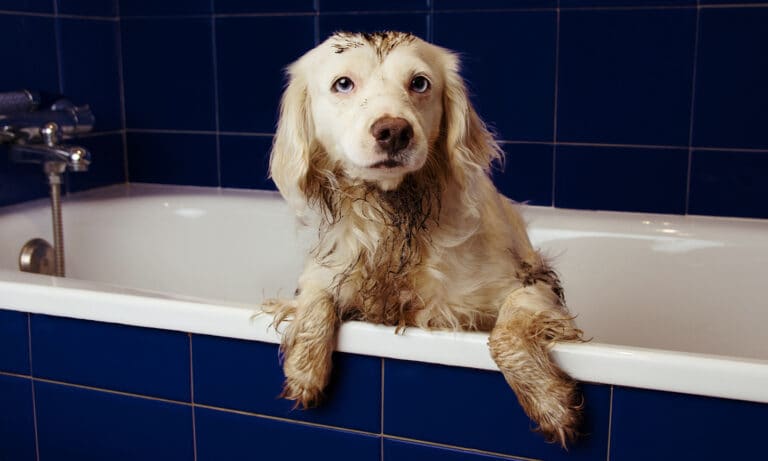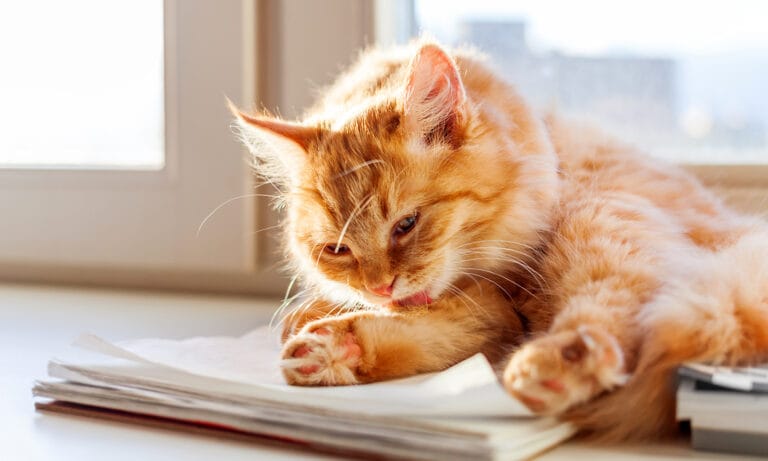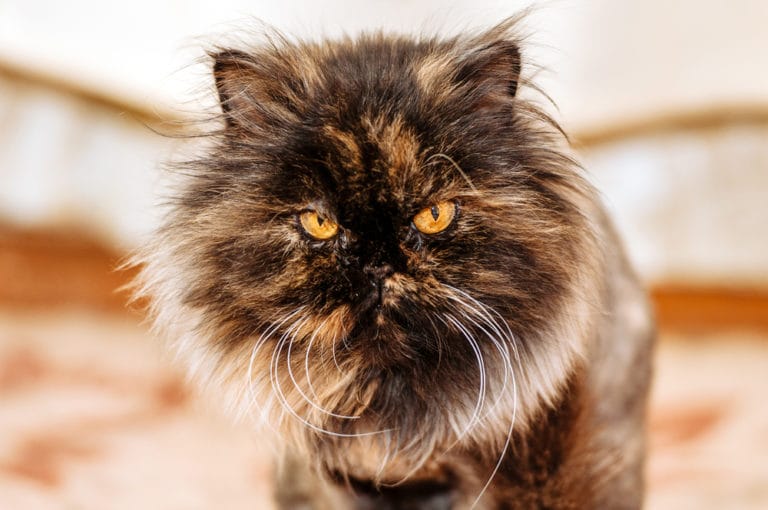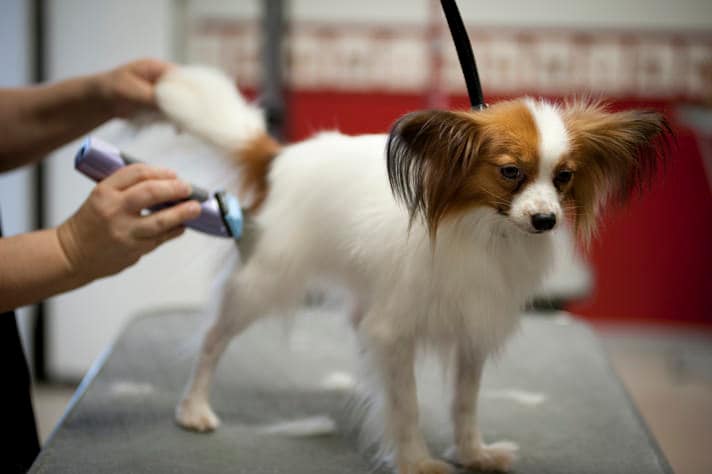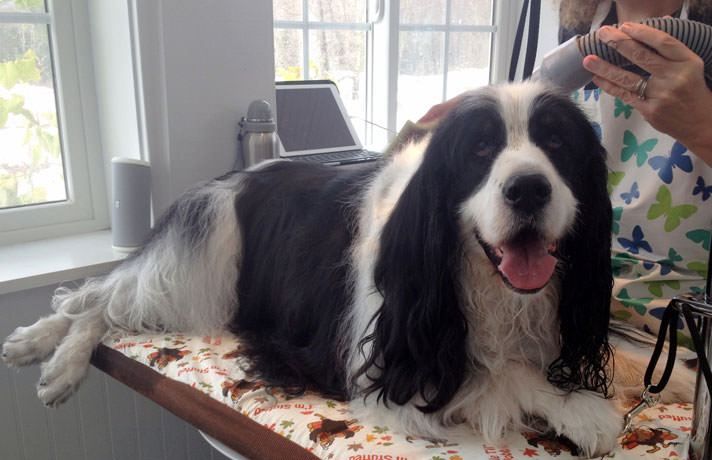When you see your four-legged companion, it’s hard not to shower her with infinite hugs and unconditional love. But, if pet dander triggers your allergies or asthma, it’s hard to go in for some snuggles without starting a sneezing fit. If this sounds familiar, you may be looking for ways to reduce dog dander or cat dander.
What Is Pet Dander?
“Pet dander is normal,” says Dr. Sarah Wooten, DVM, consulting veterinarian for BigBarker.com and small-animal veterinarian of Greeley, Colorado. “… It is comprised of tiny, almost invisible bits of dead skin that is shed by dogs and cats.” Not only can cats and dogs cause this dander, but also birds, rodents and other animals with fur or feathers.
The amount of “dandruff” that your pet sheds is based on a few factors.
What Causes Pet Dander?
It can be difficult to determine the exact cause of your pet’s dander since there are many different triggers. Preventative measures such as grooming your pet and cleaning your home are important, but it’s also vital to understand the underlying issues that can cause excessive shedding in dogs and cats.
Poor Diet and Obesity
What you put in your pet’s bowl can have a big impact on your pet’s health. Making sure your pet has healthy skin and shiny, silky fur can be as simple as feeding your pet a nutritious, well-balanced diet. “If a dog is eating a diet that is not well absorbed, or is not nutritionally balanced… then the skin and coat quality can suffer,” says Dr. Sarah Wooten, DVM, consulting veterinarian for BigBarker.com and small-animal veterinarian of Greeley, CO.
“The skin is the largest organ in the body, and if the body senses chronic, poor nutrition, then it will ‘steal’ nutrients from the skin and hair to feed the vital organs, such as the brain and the heart. This can result in a dull hair coat, hair loss, excessive shedding or dander,” explains Dr. Wooten. So, be proactive about what is in your pet’s bowl and find a high-quality food that will provide the diet he needs. You can keep the cat food or dog food fresh by storing it in airtight containers, which will help retain all of the food’s nutrients.
You can also try Dr. Lyon’s skin & coat support soft chews dog supplement, which will give your pup a healthy dose of omega-3, 6 and 9 fatty acids as well as EPA and DHA to help minimize dog dander. For cats, try VetriScience Omega 3, 6, 9 for a blend of omega fatty acids that supports skin health.
After transitioning your pet to a healthier diet, keep in mind that “It takes 8-10 weeks for skin cells to turn over, and it may take that long to see if the diet switch has been effective in reducing dander,” says Dr. Wooten. At the end of the day, feeding your pet a healthy diet is beneficial beyond just reducing pet dander in your home.
Obesity can also be a cause of cat dander; when cats are obese they “have a difficult time reaching parts of their body to groom, which can lead to matting and dander,” says Dr. Wooten. While you work on getting your feline to a healthy and normal weight, bathing your cat frequently can help to regulate pet dander. You can also try dander wipes, which will reduce flaking and work to condition your four-legged friend’s skin.
Coat Type
Grooming is essential when it comes to controlling the pet dander in your home. Whether you have a pet with long hair or short hair, routine grooming is the key to reducing shedding and maintaining a healthy coat in your pet.
There are some pets who may require more grooming than others. According to Dr. Wooten, the coats of Poodles and Poodle mixes “will never stop growing; if they aren’t groomed by a human on a regular basis, they can develop mats and dander,” so it is important to groom your Poodle thoroughly and often. Other breeds you should groom regularly are double-coated breeds, such as Labradors or Huskies, since they “need regular brushing to distribute skin oils and reduce shedding and dander,” says Dr. Wooten.
For long-haired pets, try the FURminator Long Hair deShedding Edge for dogs or cats. For short-haired pets, try the FURminator Short Hair deShedding Edge for dogs or cats. If used regularly, all of these products will help to decrease your pet’s shedding up to 90%, reduce airborne allergens and stimulate your pet’s natural oil production. Other great ways to control pet dander are by using grooming wipes and moisturizing shampoo to maintain coat health.
Underlying Skin or Medical Conditions
Some pet dander cases are a bit more complicated than changing your pet’s diet or starting a regular grooming regimen. It’s important to dig deeper to be certain that your fur baby is not dealing with something more serious than common pet dander.
“External parasites, such as fleas and mites, make pets itchy and damage the skin. Pets that have external parasites will scratch, rub and chew themselves raw, or develop red, flaky skin that indicates an infection,” says Dr. Wooten. Prevention is key when it comes to dealing with external parasites, so try flea and tick prevention collars like the Seresto collars, or talk with your veterinarian about other prevention options.
Dr. Wooten also notes that “Excessive skin flaking can be related to genetics, bacterial or fungal diseases, hormonal disorders such as Cushing’s Syndrome or hypothyroidism, or auto-immune disorders.”
Excessive pet dander is an issue that you can easily work to keep under control once you discover what is causing it. The time spent finding the culprit will be worth it for your pet and for anyone who suffers from allergies or asthma at home.

Lindsay Schencker, BeChewy Editorial Assistant
The moment Lindsay started her career here at Chewy, she hit the ground running in customer service; she knew that this is the company she wanted to grow with from then on. When Lindsay isn’t spending her time writing for BeChewy, she’s most likely binge-watching a Netflix series and cuddling up with her 80-pound fur baby, Dexter.
Share:










